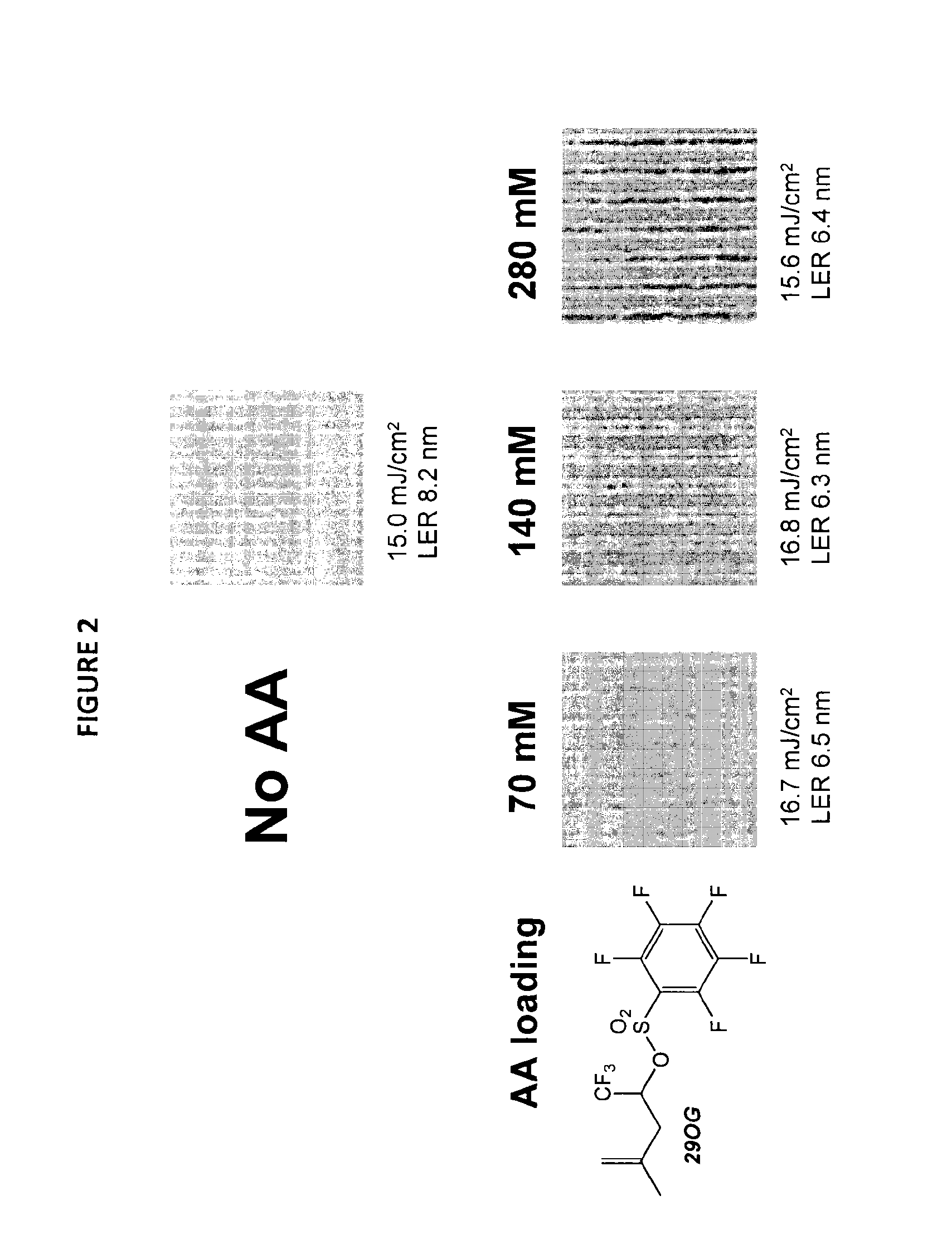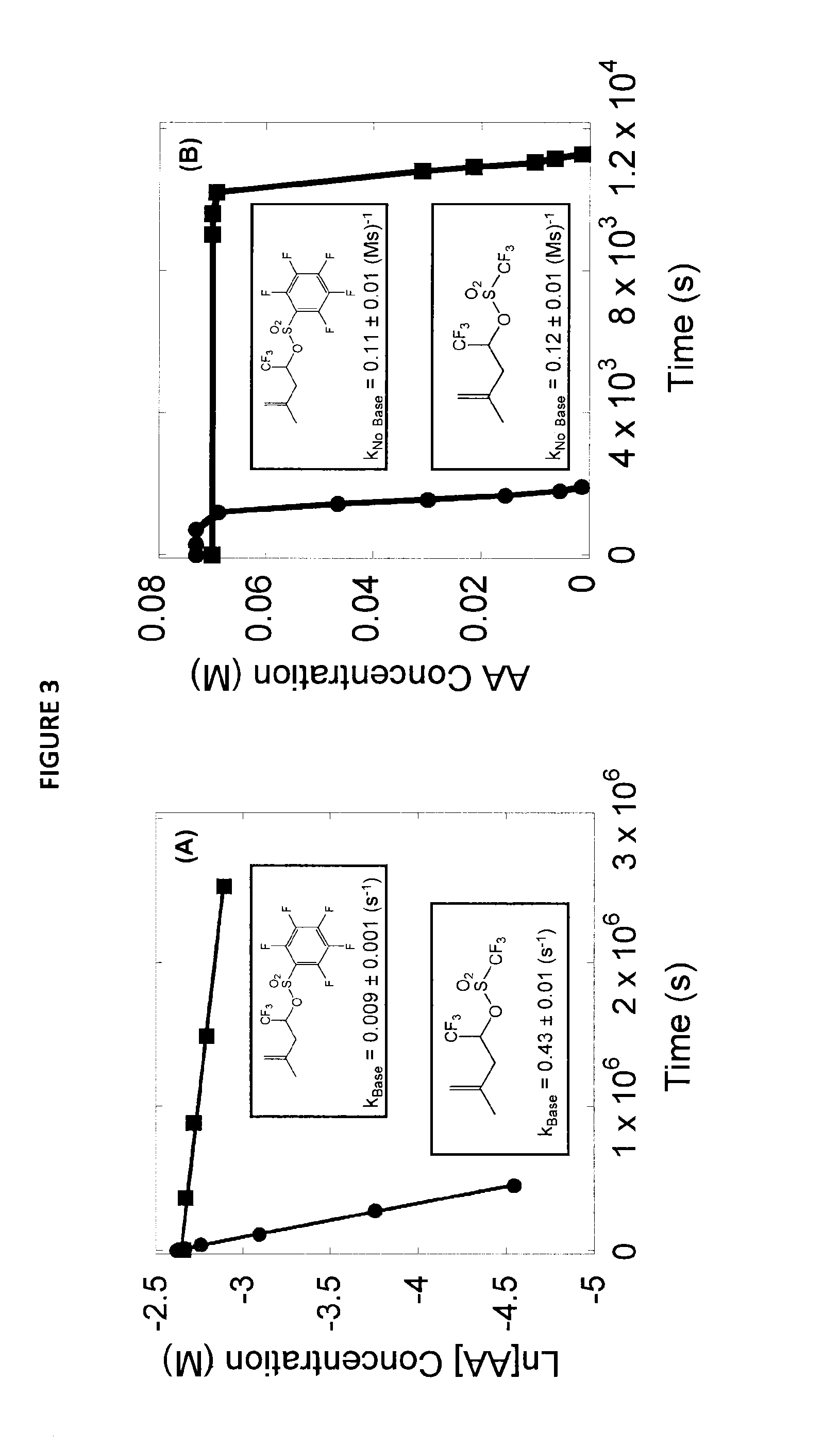Stabilized acid amplifiers
a technology of acid amplifiers and resist films, which is applied in the direction of photosensitive materials, instruments, photomechanical equipment, etc., can solve the problems of volatile compounds that can leave the resist film, the phenolic materials commonly used for photolithography using light wavelength 248 nm wavelength are generally not suitable for use as photoresists, and the performance decline, etc., to achieve the effect of facilitating the activation of the trigger, reducing the energy consumption of the trigger, and increasing the stoich
- Summary
- Abstract
- Description
- Claims
- Application Information
AI Technical Summary
Benefits of technology
Problems solved by technology
Method used
Image
Examples
examples
Synthesis of: 1,1,1-trifluoro-4-methylpent-4-en-2-yl 2,3,4,5,6-pentafluoro-benzenesulfonate (29OG)
[0158]
[0159]1,1,1-Trifluoro-4-methylpent-4-en-2-ol (0.355 g, 2.3 mmol) and triethylamine (0.23 g, 2.3 mmol) were weighed into a 25 mL single-neck flask equipped with a stir bar. The flask was sealed with a rubber septum and purged with nitrogen. Dichloromethane (10 mL) was added to the flask followed by pentafluorobenzenesulfonyl chloride (0.52 g, 1.95 mmol). The solution was stirred for 5 hours at room temperature. The solution was diluted with dichloromethane (25 mL) and washed with hydrochloric acid (1 M, 3×20 mL), saturated sodium bicarbonate (20 mL) and saturated sodium chloride (20 mL). The organics were dried over sodium sulfate and concentrated to give an oil. The crude product was purified by column chromatography using neutral alumina as the stationary phase and eluted with 90% hexane / 10% ethyl acetate to give the desired product (0.535 g, 1.39 mmol, 70%). 1H NMR (400 MHz, CDC...
PUM
| Property | Measurement | Unit |
|---|---|---|
| wavelength 248 | aaaaa | aaaaa |
| wavelength 248 | aaaaa | aaaaa |
| temperatures | aaaaa | aaaaa |
Abstract
Description
Claims
Application Information
 Login to View More
Login to View More - R&D
- Intellectual Property
- Life Sciences
- Materials
- Tech Scout
- Unparalleled Data Quality
- Higher Quality Content
- 60% Fewer Hallucinations
Browse by: Latest US Patents, China's latest patents, Technical Efficacy Thesaurus, Application Domain, Technology Topic, Popular Technical Reports.
© 2025 PatSnap. All rights reserved.Legal|Privacy policy|Modern Slavery Act Transparency Statement|Sitemap|About US| Contact US: help@patsnap.com



